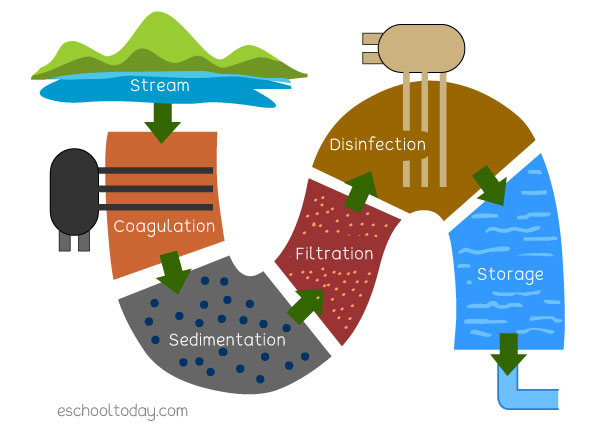- Water Scarcity
How is water treated for use in homes?
All over the world, freshwater is treated differently at a treatment center before being supplied to your home. Surface water is more often treated rigorously than underground water, as it has fewer contaminants.
The diagram below shows a simple water treatment process for surface water.

- Coagulation stage:
Alum and other chemicals are introduced to the water at this stage. Suspended particles get stuck to the chemicals to form floc.
- Sedimentation Stage:
As particles get stuck to the chemicals, they become heavy and sink to the bottom of the chamber. At this stage, most of the particles are stuck to form sediments, sinking to the bottom. The water is moved into the Filtration chamber.
- Filtration stage:
As water passes slowly through this chamber, finer particles (sediments) are filtered over layers of sand, charcoal, and gravel.
- Disinfection stage:
Chlorine or other kinds of disinfection methods are applied to kill any bacteria and other living organisms that may be in the water. It is very normal and natural for freshwater to contain living organisms.
- Storage stage
The water is then passed into large storage tanks and left for a while for the action of disinfection to be complete. At the tail end of these storage tanks, huge pipes are connected to transport water to our homes and workplaces.
